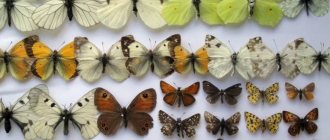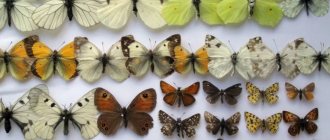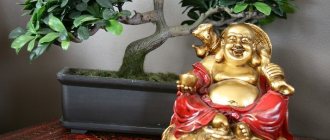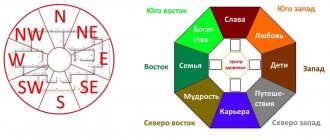Many people suffer from collecting insects in childhood. Not everyone succeeds: some become entomologists and do this for the rest of their lives. A collection of insects, even collected by an amateur, can have scientific value. But to do this, when collecting it, you need to follow some rules.
Peter Petrov
Laboratory assistant at the Department of Entomology, Moscow State University. M.V. Lomonosov, a specialist in swimming beetles. For many years he has been conducting summer field practice in entomology for students in the bioclass of Moscow Gymnasium No. 1543. He has translated 12 popular science books into Russian, including a collection of essays by Richard Dawkins “The Devil’s Chaplain.”
There are a lot of insects in the world, more than a million species, so to study them it is useful to focus on one group. For example, on beetles (many professional entomologists specialize in only one family from the order of beetles - such a large order). Or on bedbugs. Or butterflies... Although collecting butterflies is a special art.
To seriously study insects, unfortunately, they have to be killed. But let us remember that every time we run on the grass, we crush them in abundance. That is, killing a few insects for the sake of studying them is no more reprehensible than running across the lawn.
Who collects such collections and why?
First, let's figure out what a butterfly collector is called. Everything here is quite simple, although it is difficult to pronounce this term - lepidopterophilist. So, if you want to seriously engage in such a hobby, you will have to practice in order to pronounce your new status without hesitation.
It is also clear why a butterfly collector is engaged in this business. Still, not many representatives of the fauna on the planet can boast of such diversity and beauty as these insects. True, their beauty is short-lived - some butterflies live only a few days, or even hours. There are breeds that don’t even have a mouth, since they never have to eat once in their entire lives. But under glass, these fluttering flowers can be preserved for many years and even decades. In addition, this is a great way to learn more about wildlife. Therefore, this hobby can be recommended to both adults and children. Of course, there is a lot to know before you do it.
What is the name of the collection of dried insects and butterflies?
Collection of dried insects, butterflies
A collection of dried insects is called an entomological collection. It should be noted that specimens are pinned with a special pin and selected for certain distinctive features. They are stored in special boxes. Collecting butterflies is called lepidopterophilia.
Do not under any circumstances call an entomological collection a herbarium, since this concept applies only to plants.
How to catch insects for collection: recommendations
Catching insects for collection
Collecting an entomological collection is possible only for the purpose of expanding the knowledge of young naturalists. As for chasing insects for fun, this is strictly prohibited. In general, children collect butterflies, beetles and other common insects that can be encountered during walks. How to catch insects for collection?
Here are important nuances and recommendations for a young or adult collector:
- You should not dress in the latest fashion - clothes should be simple and comfortable.
- Particular attention should be paid to shoes. Ideally, it should protect your feet from cold and dampness. Wear resistance is also important.
- The headgear should not distract from fishing or fall off during a fast run. It is inconvenient to hold it with your hands.
It is important to know the time:
- It is better to catch insects in May and June.
- However, there are some species that are found towards the end of summer.
- It is best to choose the afternoon hours, since most insects fly in the hottest time, after lunch.
Let's say moths hide when the sun goes down. If the insects are nocturnal, of course, they are caught after sunset. It is very easy to catch insects before a thunderstorm. The air is stuffy, and the stuffiness forces them to leave their shelters.
The better way to catch butterflies and other beetles, mosquitoes, moths and so on:
- As a rule, naturalists use special nets.
- A stick serves as support.
- This net is a strong wire circle with a diameter of about 30 cm . Attached to it is a cone-shaped bag made of lightweight fabric.
How to catch an insect:
- You should approach carefully.
- The shadow should be behind the insect, and not in front - otherwise it will slip away.
- The net should be cast quickly and accurately, surrounding the insect and preventing it from escaping.
- In addition to the mesh, there must be scissors made of strong iron wire.
Where are butterflies, beetles, moths, mosquitoes and other “bugs” with wings found:
- Often these are fields, the edge of a forest with flowers, meadows, etc.
- Moths can be caught as dusk approaches. Then there are swarms of small midges.
- You can attract butterflies by watering the branches of a tree with a mixture of honey, water and white beer or sugar water.
They should gather on one of the branches and this will make it easier to catch them. Watch a video of how Canadian scientists catch insects using convenient and interesting methods:
Green Way
The first and completely natural desire of children (especially boys) who go from the city to the forest, field or just to the park is to catch beetles, spiders, grasshoppers and other insects. This is of course dangerous. And of course, such danger is very useful, because we live in a dangerous world, and our children will live in a dangerous world. Dangerous is already somewhat different, so our children will need their own experience of living among dangers, and not our experience, and certainly not our prohibitions.
So, many insects are dangerous, so when catching them you will need some knowledge (from books or from experts). Insects are beautiful and interesting.
The process of catching them is interesting. But the destruction of beautiful living creatures in itself is not honorable. You can, of course, treat a cat or bird to a grasshopper, or simply place a beetle on an anthill.
But you can also collect a collection of insects , in any case, collections and further work on insect samples using identification guides, reference books, monographs, etc. are welcome on our project.
Crimea is one of the traditional places of pilgrimage for entomologists - insect specialists. Many species of these tiny but perfect animals are found only in Crimea; they are endemic . For example, the famous ink beetle ( Crimean ground beetle ) is bright purple in color and the length of a matchbox (by the way, the dimensions of a matchbox right away: 1 cm -3 cm - 5 cm). It is believed that this is immoderate collecting, but in fact it is immoderate use fertilizers and pesticides - has led to the fact that the ink beetle has become a rarity; a large fine is imposed for its destruction. The same applies to many other types of insects, so if you want to assemble an entomological collection, it should not be built according to a random principle. First get acquainted with the sections on insects in books, and then start collecting.
There is quite enough scope for collecting if you set a goal, for example, to collect insect pests of gardens, fields, vineyards, forests or parks - there will be no restrictions. Deceiver insects are interesting (imitating poisonous insects, leaves, twigs, bird droppings, etc.), but here you can no longer grab everyone indiscriminately. many species are disappearing.
To collect, you need a little: a net, a “stain” - a jar with a tight stopper, on the inside of which a cotton swab moistened with chloroform (acetic, sulfuric ether) is pinned, tweezers, a magnifying glass. Insects killed in “stain” are stored during travel in a hard box in layers of cotton wool with naphthalene. A label is placed nearby indicating the time and place of collection, weather conditions, and insect behavior.
At home, to process samples you will need a desiccator, straightening, hard boxes for exhibiting, and identification tables.
Cotton wool dehydrates insects and makes their bodies and wings fragile, so before straightening they are placed in a desiccator - any vessel with a ground-in wide lid, with wet sand placed at the bottom. In a day or two, the insect will absorb moisture and become flexible. To prevent it from becoming moldy from moisture, the sand is watered with a weak solution of carbolic acid.
Many insects have to spread their wings, legs, and antennae. This is done on a special straightening, which, however, is easy to make yourself from polystyrene foam or soft wood. To do this, a small groove is made in it for the body of insects. Using tweezers, all parts of the body are straightened and fixed with strips of paper and pins. After a day or two, when the insect has dried on the spread, it is freed from stretch marks and transferred to a box where the exposure is formed according to some principle.
If insects are grouped for some “aesthetic” reasons: yellow to yellow, large to large, or beautiful to beautiful, then you don’t need to think long. Grouping by habitat or time of capture is also simple, but selecting close relatives into a box is more difficult. To do this, using identification tables and using several rules, signs are found that allow the insect to be assigned to any order, genus, or species. This already makes the collection scientific; you fill out the label completely and secure your trophies above it in a thick box made of wood or foam. Thin felt, polystyrene foam, and synthetic sponge need to be glued to the bottom of the wooden box so that the pins fit easily and sit securely.
The insect is pinned in different ways: beetles - in the upper corner of the right elytra, bedbugs - in the scutellum, all others - in the middle of the chest. The pin should pass through the insect strictly vertically. Above it, it should rise no more than 1-1.5 cm. Small insects are pinned onto small headless pins, which are previously inserted into a porous material; You can also stick them with glue on strong, thick paper.
It is good to supplement collections of pests with herbariums of damaged areas of plants. Boxes with insects are closed with glass or transparent film.
It is no less difficult to make a good photo collection of insects, especially if you set yourself the task of determining the species, studying the lifestyle, etc.
But in general, it's quite interesting to just photograph insects and other animals. And then just on occasion, find out something about them...
photo gallery “Fauna and fauna of Crimea and other countries”
source
How to kill insects for an entomological collection?
Insects in the entomological collection
This must be done quickly and humanely. You shouldn’t let a living creature suffer for a long time. This develops cruelty in children. Little butterflies just get squeezed. Larger insects can be doused with hot water. Or put sulfuric ether at the bottom of the box.
About punctures:
- The puncture with a pin is carried out in the middle of the chest.
- You need to carefully pass the pin through the entire body.
- The insect should be spread out on a damp board. It should dry.
- Each board should be equipped with a piece of paper glued with gum arabic. This makes it easier to determine what species or type the insects belong to.
- They should be stored in boxes with cork or peat at the bottom.
- It is best to prick butterflies from top to bottom.
- Before the box is closed, a bottle of gasoline is dropped into it. It protects against moths and bugs.
- If the butterfly has wrinkled over time, it should be placed under a glass cover and then straightened.
Worth knowing: If mold appears on a bug, then lubricate this area with a brush with alcohol or ether.
Here's more information on how to kill insects for an entomological collection:
- Collectors should remember that killing insects is, in this case, a necessary necessity, and not a way of obtaining pleasure.
- As a rule, specially made stains are used. This is the most painless way to take the life of an insect.
- They can be with sulfuric or acetic ether, or chloroform.
You can make stains using tall glasses made of thick glass or jars. It’s great if you can seal the stain with a cork stopper.
Tip: Place some tissue paper at the bottom of such a glass or jar. This is especially necessary if you want to dry several insects at the same time. This method helps to prevent insects from rubbing and forming a ball. Butterfly stain does not require paper.
It's also worth remembering:
- There should be several stains. Large beetles should not be placed in the same container as flies, etc.
- In order to kill insects, you need to wet the cotton wool with the above mentioned agents. Vapors from various ethers and alcohols can kill living organisms.
- Acetic ester kills more slowly. However, insects killed in this way are softer.
- If there is no ether or chloroform, you can use gasoline.
Precautionary measures: Ether and gasoline are flammable substances. Therefore, when using them to treat insects, be careful.
HIGH TEMPERATURE to kill insects. This method is suitable if you do not have poisons or do not want to use them. To do this, do the following:
- Take a tin or zinc jar.
- Close the lid tightly.
- Place in boiling water.
Don't do this to insects that have developed jaws. They can ruin other copies.
Killing can be carried out in wine alcohol:
- Dip the insects into a container with this substance and you’re done.
- But it is important to remember that this is suitable for those who do not have long, bright hairs or scales.
- That is, you can only kill dark-colored beetles this way. The alcohol strength must be at least 60°.
As you can see, each type of beetles, butterflies, moths, mosquitoes and other insects has its own method of killing.
Important Details
To prevent insects from molding in the boxes, freshly chopped ones should be allowed to dry without closing the lid tightly. If the room is dry, they will dry in a week or two. Then it is better, on the contrary, to store them in tightly closed boxes so that they are not eaten by other insects, such as carpet beetles, many of which feed on dry corpses, including those stored in collections.
A novice entomologist should get acquainted with specialists and seek their advice. In Moscow, such people can be found, for example, at the Department of Entomology of Moscow State University, where a school club operates. In St. Petersburg there is the Zoological Institute of the Russian Academy of Sciences, where many entomologists work and one of the best entomological collections in the world is stored. By the way, the employees of this institute maintain a rich website about beetles (https://www.zin.ru/animalia/coleoptera/), on which they willingly post not only scientific works, but also many other materials and images, including those sent from all over light by bug lovers. In Yekaterinburg, insects are studied at the Institute of Plant and Animal Ecology of the Ural Branch of the Russian Academy of Sciences, in Novosibirsk - at the Institute of Systematics and Animal Ecology of the Siberian Branch of the Russian Academy of Sciences, in Vladivostok - at the Biology and Soil Institute of the Far Eastern Branch of the Russian Academy of Sciences.
Published in the magazine “Schrodinger’s Cat” No. 6 (08) for June 2015.
How to painlessly euthanize an insect
The collection of butterflies most often begins with representatives of the most common families. This includes whitefishes, nymphalids, marigolds, bluebirds, swallowtails and others. Well, even by collecting just a few butterflies from each family, you can already create an impressive collection that will do honor to any beginning lepidopterophilist.
But the collector loves wildlife and will try not to torture the caught or hatched insect, ensuring it has the easiest, fastest and most painless death possible. How to do this?
For this you will need ether. It can be purchased at many veterinary clinics and pet stores. But, alas, it is not always possible to buy ether, especially in small towns or villages, where it is easiest to get interesting exhibits. Well, a butterfly collector can also use ammonia or ammonia, which is sold in most regular pharmacies, and the solution is not at all expensive. And using it is as simple as possible - any teenage beginner can easily cope with the task.
It is enough to dip a small piece of slightly compressed cotton wool in ether or ammonia and put it in the jar where the butterfly is, then close it with a lid. After some time (it depends on the amount of liquid absorbed by the cotton wool and the volume of the container), the insect dies painlessly.
How to dry insects for collection: general recommendations
Collection of insects
An insect should be dried immediately after it is caught. If it is necessary to dry the beetle, it is glued to the foam with glue. You definitely need to straighten his paws and secure them with pins.
- After the insect has dried, you need to carefully remove it from the foam and then glue it onto a cardboard block.
- It is important to protect the collection from pests.
Insects are attached to the foam with pins if they are dry. There should be a piece of paper with the name next to it. The foam is placed in a box and put away in a warm and dry place. As a rule, drying lasts about a week. But everything can be ready earlier. The beetles will take up to a month to dry. The period depends on the size of the insect and the region where it was caught.
Insect pins
Pins for pricking insects are made in a special way; they differ from simple pins in that they are longer and thinner. The puncture with a pin is made through the middle part of the insect's chest, carefully passing the pin through its entire body.
Spread the insect on a damp board before it dries, or on a layer of damp sand under a glass cover. Remaining for some time in this environment, the insect absorbs moisture and becomes flexible and soft.
How to dry butterflies for a collection?
Butterfly collection
So, how to properly dry butterflies for a collection? Here are some important nuances:
- The main thing is to spread your wings. This needs to be done correctly.
- If the insects have just been caught, you can immediately begin the process.
- And if the butterflies are dried, then they need to be soaked.
- This can be done in a glass desiccator or in a saucepan. Sand is poured there (preferably it should be fine, river sand, sifted through a sieve, and kept in boiling water).
- Drain the water and use the sand to arrange the bags of butterflies.
- Instead, you can use cotton wool or damp foam rubber. The butterfly is soaked in water vapor.
- Cover the pan tightly with a lid.
Tip: Add phenol to the water. It will save you from rot and mold, but this substance is considered very toxic.
Small butterflies can be straightened out the very next day. Large ones take a little longer. You can add water to a syringe and inject it into the insect's chest, where the wings begin. This will speed up the process. It's also worth knowing the following:
- If the butterflies are rare and delicate, they can be put on a pin right away.
- If the insect's head is turned to one side, it should be adjusted with tweezers so that it takes a normal position.
- Insects are spread out by spreading.
- It is necessary to position the insect so that its body is in the groove and its wings are located on the planks. The basis for straightening is a wooden plate.
- On some products, the distance between the boards is adjusted using a screw.
The process of laying the butterfly out:
- Insert a pin with a butterfly into the groove, perpendicular to the longitudinal and transverse axes.
- The bases of the wings should be located at the upper edges.
- Stick it to the right of the abdomen - otherwise the butterfly may start to turn.
- Place pieces of cellophane or tracing paper on the wings, which are held on boards. They should cover the wings almost completely.
- Use a long tailor's pin. Use it to carefully move the wing until the top edge is perpendicular to the longitudinal axis.
- Then move the rear fender. It should go under the front one.
- The other pair of wings moves similarly. By the way, don't pierce the wings. This will ruin their appearance.
Tip: Pin along the edges. The wings should be pressed against the planks and not be displaced. Place cotton wool under the belly to prevent it from drooping, and place the mustache along the front edge.
The butterflies take several days to dry. And then their body retains its properties. By the way, insects that have just been caught take longer to dry than those that have been soaked.
When the butterfly has already been removed from straightening:
- It needs to be labeled.
- Indicate on it the name of the region where the butterfly was caught, the date, and the name of the catcher.
This design of the collection allows you to preserve the insect in a beautiful form for a long time, and the label will not allow you to forget all the necessary information.
How to properly kill insects for collection
Killing of caught insects must be done quickly and skillfully in order to save them from unnecessary suffering, the sight of which develops cruelty in children.
With small butterflies fluttering during the day in the light of the sun, the punishment is short: you just have to press harder from left to right the lower part of their chest, and the butterfly immediately turns into a corpse.
Killing larger moths and moths involves some difficulties. There are several methods practiced for this purpose: they bring the caught prey home and expose it to hot water vapor, or they take tin boxes with them for a walk, at the bottom of which there are small pieces of cotton wool soaked in sulfuric ether, in these boxes the insect is placed in the very moment it was caught.
Killing by hot steam is carried out as follows: water is heated to boiling in a pot covered with a tin lid, to which is attached a small vertical tube equipped with a narrow hole. As soon as the water in the pot begins to boil, hot steam appears from the narrow opening of the tube, instantly killing the insect brought to it, which is first placed on a pin. To protect your hand from the action of hot steam, grab the pin with tweezers or tweezers.
Killing insects at home requires great precautions to ensure that the caught prey retains its beautiful, unbruised appearance.
Insects are brought home in ordinary pill boxes or small triangular funnels made of ordinary paper, into each of which a butterfly is carefully lowered, trying not to crush its beautiful wings.
How to properly dry a grasshopper or praying mantis at home?
Properly dried grasshoppers, praying mantises at home
The main disadvantage of drying a grasshopper and a praying mantis is that it will turn from a green “handsome” insect into a brown, wrinkled insect. It is very difficult to bypass this process. How to properly dry a grasshopper or praying mantis at home? Important details:
- As mentioned above, it is important that insects do not turn black when dried and retain their color.
- Therefore, before starting the process, it is better to gut them - otherwise they will take a long time to dry and retain an unpleasant odor.
This all needs to be done in the following sequence:
- After grasshoppers and mantises are caught, they are killed in the stain. It is necessary that the jar has a wide neck and strips of paper at the bottom.
- To “stain” you need ether. Evaporate it in a jar, then place the insect and close the container for several hours.
- After this, the insects are immediately straightened and impaled. This is done on the first day, while they are still wet. Otherwise, there is a risk of breaking limbs, and for grasshoppers and mantises this is the most important thing.
- Insert pins into the grasshoppers' right elytra.
- After this, wait until the insect dries.
- The paws should be closer to the body so as not to break them.
Then label the collection and place it in a permanent storage location.
Carefully straighten the exhibit
Once the butterfly has died, it must be prepared to be placed under glass before it dries out and the wings freeze in an inappropriate position. An experienced lepidopterist knows this and always has the appropriate equipment at the ready.
In general, various devices can be used. Some people prefer to purchase special ones, which are sold in specialized stores and are quite expensive. Others decide to make equipment with their own hands, at least for the first time, until it becomes clear whether this hobby will be an ordinary, quickly boring whim or will remain for life.
The easiest option is to take a board of soft wood and make a narrow and not too deep slot in it according to the size of the trophy’s body. Any beginning butterfly collector can do this.
Carefully place the euthanized insect on the board so that the body fits into this gap. Now very carefully straighten the wings and press them against the tree. Place a piece of thin polyethylene (a transparent disposable bag will do) or tracing paper on top of each wing and secure with pins. At the same time, try not to bury the body too deep into the gap so that it is at the same level as the wings. Then your trophy will look most elegant and will become a magnificent decoration of the collection.
How to collect beetles
Collecting beetles is unlikely to differ in any significant way from collecting butterflies. Beetles are found especially often in vegetable gardens, meadows, etc.; They are usually caught with a bag called a scoop. The latter consists of a stick equipped at one end with a wire circle, to which is attached a bag made of coarse linen. The scoop, with the hole pointing downwards, is moved across the grass, bushes, etc., capturing any insects that come across in a bag.
There is another device for catching beetles, the so-called mace, arranged as follows: a stone of quite significant weight, or a weight weighing 2 pounds, is carefully wrapped in rags and covered with cloth or leather, after which a belt is attached to it accordingly or rope.
With such a mace, children go to catch beetles - approaching a tree, they spread a scarf under it and hit the tree trunk with a certain force with the mace. The blow causes the tree to shake, and beetles, caterpillars, etc., which have found shelter in various corners of the tree, fall on the scarf in abundance.
The method of catching beetles just described is especially practiced in places where deciduous trees grow.
In the early morning hours, when a mace strikes such a deciduous tree, heaps of insects usually fall to the ground. Some types of beetles are found in ant nests, so when going after them, you need to carefully inspect the anthills.
How to dry a spider for collection?
Dried spider for collection
It is best to catch and dry spiders for collection in August or September. At this time there are the most mature individuals. For fixation, you can use 96% alcohol or 10% formaldehyde. The smaller the spider, the more difficult the drying process. You should not kill spiders thoughtlessly. In such cases, their limbs bend and freeze.
It is better to put the victim to sleep:
- Place the spider in the jar.
- Instead of a lid, use a cotton swab soaked in formaldehyde.
- After a while, the paws need to be straightened with a pin on the board, that is, straightened.
- Entomological pins must be of standard length and have round heads. Regular ones cannot be used. They rust quickly. This must be done when the spider is already dead. The paws are straightened and fixed. For this you need pins and strips of paper.
- It is important not to break anything for the spider. But at the same time, there should be no contractions in the paws; reliable fixation is also important.
- Spiders should be stored in a dark, dry place.
Here's another way to dry a spider. Also suitable for various beetles. You will need the following:
- A jar that will be used for stain.
- The thicker paper will be used for mattresses and labels, and the softer paper will need to be filled with stain and made into “mattresses”.
- Use ethyl acetate or nail polish remover as a poison.
- You will also need cotton wool, thread, needles and cardboard boxes.
- Containers - plastic and metal.
- You also need glue and binoculars.
Do the following:
- Fill the jar with paper, which must first be cut into strips. You can crumple it up. This is necessary to ensure that the specimens are clean and dry.
- Then add a few drops of the polish remover liquid there. This is an analogue of ethyl acetate. It poisons insects, but does not make the integument fragile.
- Now cut out the bases for the mattresses - you can put a box, for example, of sugar, on the sheet.
- Fold the edges and cut rectangles at the corners. All blades are bent twice - at the edge and after half a centimeter.
- Insects or spiders are laid out on a mattress and mounted on pins.
For each mattress, cut out a rectangle to place on the bottom (thick paper) and a rectangle of soft, thin paper (to cover). There must be cotton wool on top of the dense fabric. Now place the frozen insects. But you can prick them right away. Once the insects are dry, they can be soaked. To do this, the mattress is placed in a closed pan with damp cotton wool at the bottom.
When the insect or spider is dried, you need to write explanations on a covering of thin paper. As a rule, this is the region and the surname of the young researcher. If the type of insect is unknown, you should take a key and find it using identification marks.
Butterfly collection
Each board is equipped with a piece of paper glued with gum arabic, on which the belonging of the butterfly to one or another species is indicated. To determine the species, genus of butterflies, etc. They usually use some kind of natural history textbook that is understandable to children.
Collections are stored in boxes approximately 20-25 centimeters wide, 30-40 centimeters long, and about 6 centimeters high.
Having carefully placed the collections in the box, it is covered with a sliding wooden or glass lid. A cork of known thickness or peat is placed at the bottom of the box so that pins can be inserted freely.
It is most convenient to prick butterflies in a certain order from top to bottom; Before closing the box, a small vial filled with gasoline is placed in it, which protects them from moths and beetles. Instead of a bottle of gasoline, you can also put a few grains of camphor in the box.
In the case when the wings of the butterfly become wrinkled again from time to time, the butterfly is again placed on damp sand under a glass cover and then, when the wings become soft and flexible again, they are carefully straightened. When mold appears in the box, the corresponding place is lubricated with a brush dipped in alcohol or ether.
How to dry a bumblebee: tips
Dried bumblebee for collection
For the collection, bumblebees and hornets must first be cast in resin or acrylic. Simply because a stinging insect is dangerous enough to poke with a pin while it is still alive. Here are tips on how to dry a bumblebee:
- To begin with, the individual should be caught in a container. It can be a jar or a box.
- Plant in a jar of epoxy resin with hardener or acrylic. For this you will need disposable containers.
- Mix the “fill” thoroughly.
- The process itself has three stages. First you need to fill the first layer, put an insect there (beetle, bumblebee, wasp) and pour it. Before this, you should give the beetle the desired pose. The last stage is to fill everything completely.
- After the insects drown, they need to be taken out and spread on the foam with pins and allowed to dry.
Important: The main thing is not to prick yourself on the sting and make sure that the insect no longer shows signs of life. Quite often, bumblebees, bees and wasps can only pretend that they are unconscious, and after a person takes them in his hand, they sting.
By the way, you can give the bumblebee the desired pose with tweezers or another sharp object, even a nail. The main thing is to be careful. The beetle should lie tightly. There is no need to fill it with the entire portion of resin or acrylic at once, otherwise it may move. Watch the video on how to soak and straighten insects. The collector clearly shows this.
What is the best time to catch insects?
The best time for catching insects is usually May and June - only some types of insects can be caught by the end of summer. More convenient hours of the day, if you have a choice, should be considered the afternoon, because most insects usually fly in the hottest hours of the day, when the sun's rays are most warm; some of them, for example, a famous species of moths, hide together with the sunset. Nocturnal insects are usually caught at dusk and in the evening. Insects are especially easy to catch before a thunderstorm; the stuffy air sets them in motion and they crawl out of their homes.
How to decorate a collection of insects with your own hands: ideas
There are more than a million species of insects in the world. Each of them is truly unique. A collection of insects, even collected by an amateur, also has its value. This is why many people are interested in creating collections. It is important to arrange it correctly so that you can display it or simply store it. Below you will find ideas to help you decorate your insect collection with your own hands.
The simplest option is to place the insects on a paper mattress or foam, place them in a frame and cover them with glass.
DIY insect collection
Here are the original collections of butterflies.
DIY insect collection
DIY butterfly collection
You can create compositions using jars and glasses. Also use dry branches, moss and other natural materials.
DIY butterfly collection
In the middle you can place the most beautiful and rare beetles, which will be the center of attention.
DIY beetle collection
Large dried insects look beautiful in separate glass containers.
DIY beetle collection
In one large box you can make sections, in each of which you can place insects from a separate region.
DIY beetle collection
How to catch butterflies?
There are special nets for catching butterflies. The net, supported by a stick, consists of a circle made of strong wire; The diameter of the circle is approximately 30 centimeters. A rather long bag made like a cone from some light material, gas, etc. is attached to the circle.
It is more convenient to make the circle described above from two separate, well-folding halves, each of which is equipped with a quadrant hole at the lower end and secured with a nut. An ordinary stick is driven into a hollow iron cylinder and secured with a side screw.
When he sees insects, the young naturalist carefully approaches, trying to walk in such a direction that the shadow he casts is placed behind him and not in front - otherwise, the approaching shadow will frighten the insects and they will quickly fly away.
At some distance from the insect, the boy deftly throws a net over it, making several movements with it from side to side, due to which it surrounds the insect so much that it is not possible for him to escape from the net.
In addition to the mesh, you also need to stock up on scissors of a special device, which consist of a handle made of strong iron wire, and legs representing frames, approximately quadrangular or round in shape, also made of iron wire and covered with gas (gauze). Both frames differ in size, so that when the scissors are closed, the larger frame encloses the smaller one - thanks to this special device, the captured insect is firmly held.
Is it possible to transport collections of dried insects to the Russian Federation purchased abroad?
There is a lot of controversy over whether it is possible to transport insects purchased abroad to your homeland. On the one hand, customs may not look at the contents of your hand luggage. But it is better not to transport them in alcohol. Since it is prohibited to bring liquids with a volume of more than 100 ml .
- Insect collections are often transported in the luggage compartment. Naturally, in some cases the legislation requires a special permit for the transportation of animals.
- But some naturalists manage to ignore the “voice of the law” and transport their collections in some kind of container (for example, inside a guitar or double bass), thereby ignoring paperwork.
- Naturally, airport workers can detect this and then they will have to answer according to the Law.
In the question “is it possible to transport collections of dried insects to the Russian Federation purchased abroad”, everything depends on many factors:
- Number of insects in the collection.
- Their uniqueness and value for the state from which they are exported.
- Availability of permission and accompanying documents.
- Individual airline requirements and other conditions.
Therefore, before transporting your collection, you should consult the airport help desk or call the operator at the airline’s phone number. They will answer all the necessary questions and explain the conditions for transporting certain luggage or the contents of hand luggage.
Where can you see real state collections of insects collected by scientists?
A real state collection of insects collected by scientists
You can see real, state collections of insects collected by scientists in museums. As a rule, these are the works of entomologists - specialists in their field. Sometimes, in order to obtain a rare adult, they go to distant, exotic countries and spend more than one week on expeditions, overcoming hardships and hardships.
Zoological museums with huge collections of insects are available in Moscow and St. Petersburg . There are also in other cities, but they are not so grandiose. The insect collection in St. Petersburg is more than 300 years old and contains about 8,000 rare specimens .
A collection of insects in glass: why you can’t keep them at home according to Feng Shui?
Collection of insects in glass
According to Feng Shui, keeping insects in collections in glass at home is prohibited. Why? Here is the answer:
- Non-living organisms can change the energy in the house, which will negatively affect the life, health and well-being of the entire family.
- It is the influence on the energy background that is of great importance. Despite the fact that insects can be minimal in size, even such beetles, moths, butterflies and other insects transmit very powerful negative energy. She shouldn't be in the house.
- Dried insects can affect human health and make sleep worse.
- Moreover, frequent conflicts, quarrels out of nowhere, and misunderstandings with loved ones are possible.
Therefore, you should think many times before bringing a collection into your home.










